Not Heartcatch. FACT.
Fight me.
Not Heartcatch. FACT.
Fight me.
I just don’t understand why The Rolling Girls has the reputation it has, as as alluded to in this well timed post defending it. It’s not just that it’s seen as a flawed show, but as an example of a show that collapsed completely, with the promise of the first episodes not delivered by the rest of the series, even dragged out as an example of how Wit Studio always does that when e.g Kabaneri of the Iron Fortress went through its own *ahem* derailment. But I don’t see it. Having binged the entire series over the weekend I found a rather charming, fun seriocomic adventure series that actually holds together better than many more esteemed series.
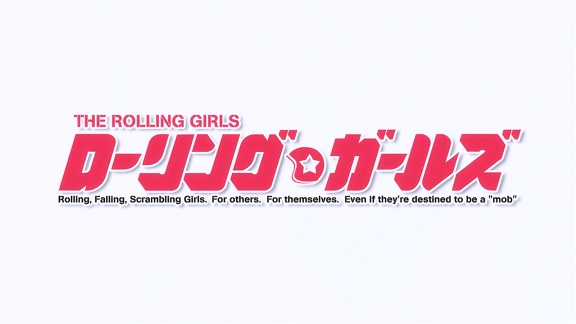
But you have to understand what it’s about first. And to know that, you need to understand that subtitle: Rolling, Falling, Scrambling Girls. For others. For themselves. Even if they’re destined to be a ‘mob’. That’s the core of the series. The Rolling Girls start out as supporting characters in other people’s stories and through a series of misadventures, they don’t grow into heroes and remain supporting characters. And that’s fine. But if you don’t take it seriously and think that this is just another zero to hero type of story, you’ll be in for a disappointment. And I think that’s where a lot of the criticism of this series comes from.
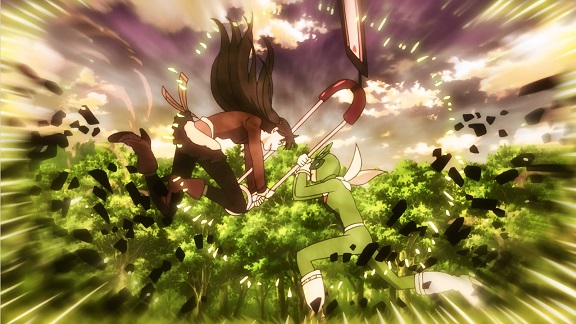
To be honest, it is not difficult to get the wrong idea about The Rolling Girls from its first episode, with all its cool footage of superpowered vigilantes fighting each other. Because that’s apparantly how in a fractured, future Japan, the various warring states solve their disputes. Each “Best” is supported by their vigilante squad of “Rests” who mostly stand on the sidelines and get blown away by the intensity of the fights. Moritomo Nozomi is one of those Rests, her sister being the squad captain of the local vigilantes and not so secretly the resident Best. When she gets hurt during one fight Nozomi decides to take over, going on a tour of Japan to fulfil the requests asked of her sister, together with three other girls with their own reasons to travel.
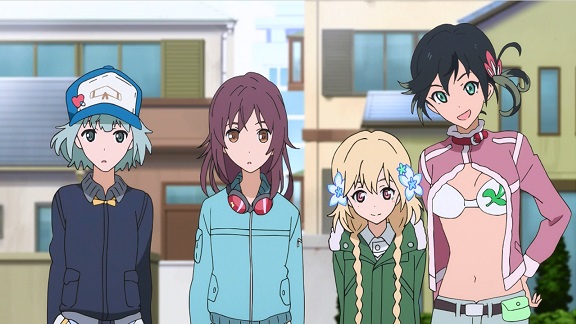
The perfect setup for a group of four misfits to learn how to become Bests through their shared adventures discovering new countries and solving their problems, becoming close knit friends in the process. And that sort of happens. After the first two episodes set up, the next six have the four visiting Tokyo — one big year long Comiket –, Mie and Aichi — racing and deep fried shrimp — and Kyoto — rock and geishas. Each country has its own cultural tics and problems, which Nozomi and co try to solve, but they’re mostly serving as a catalyst rather than actively contributing. In fact, in a fair few episodes they’re rather useless. The final four episodes find the girls in Hiroshima, where everything comes to a head as all the various subplots brewing since the first episode come to a head. Again, most of these subplots are resolved without them or even in spite of them and in the end they’re still more or less the same people as that set out to travel.
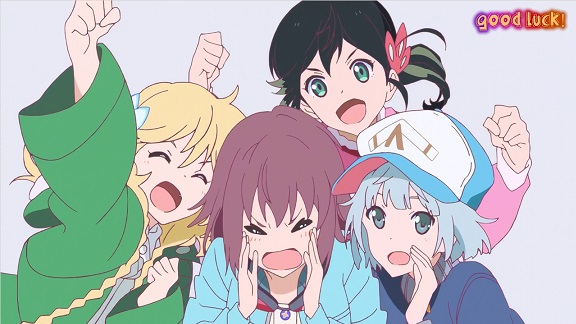
I like that, personally, that they didn’t get to be the big heroes but in the end were arguably still supporting characters in their own series. No angst here about wanting to be the best, or boring platitudes about working hard to achieve your dream, but no learning to live within your limitations either. They may have been rests, they still ended up helping change the world.
The series isn’t perfect: the main plot is barely established before it comes crashing into the last four episodes, there are several times when characters behaved like complete idiots because the plot demands it, our protagonists are sometimes more bystander than catalyst and there are some tonal shifts in the first two episodes that were hard to swallow. But in the end, this is a series about finding a place in the world that’s too big for you to be the Best, without resigning yourself to be just a mob character, a series that revels in the fun worlds it creates, that was messy and too ambitious for its own good, but still ended up achieving much of what it set out to do. I hadn’t started watching weekly anime yet when The Rolling Girls was streamed, so I don’t know how I would’ve received it had I watched this week by week, but ultimately I think it’s much better than its reputation would lead you to believe.
Japanese salaryman turned ten year old warrior mage in an alternate, 1920ties Germany uses his/her little girl voice to obey the letter, if not the spirit of international war crime law, then bombards the undefended capital of the enemy. So edgy you can cut yourself, but the series so far manage to balance Tanya’s coolness and bad-ass attitude with how sick (s)he is not to mention how fucked over by the god that landed him/her in this predicament. This could’ve been fodder for the anime reichwing, but the occassional Trump meme video notwithstanding, it seems to have managed to escape that fate, even though blonde, murderous under age girls are like catnip to that crowd normally.
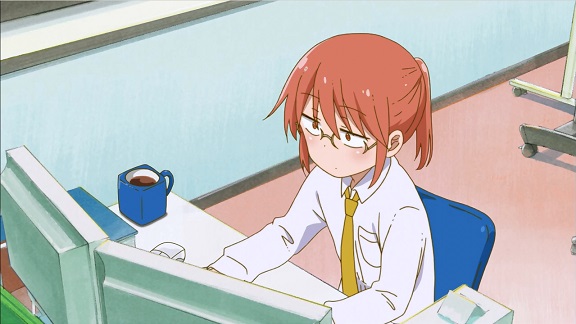
I’ve worked with Kobayashi-san. Not literally of course, but with women like her, testers and developers in an overwhelmingly male workplace, often the only woman in a department or team, sometimes pioneers. In the almost twenty years I’ve been working in IT I’ve seen a fair few of them and while the numbers of women in IT has crept up, my current team of fourteen still only has two female developers. Sometimes it seems IT has actually regressed in this regards, software development becoming more male dominated rather than less.
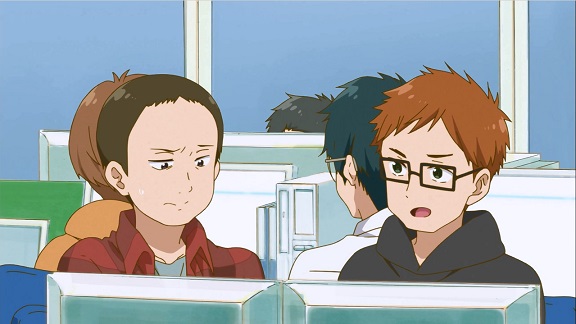
As we’ve seen throughout the series so far is that Kobayashi-san doesn’t dress very girly, shall we say. At home she wears comfortable, somewhat slobby clothes, jeans and sweaters. At work she dresses like her male colleagues, shirt and tie, not overly formal, but good enough for IT work. She gives the impression of not overtly caring about how she looks, other than being neat enough for the office. It stands in sharp contrast to the usual office lady we see in anime, dressed in a work uniform or at the very least in skirt and blouse; Kobayashi-san must be deliberately dressing as one of the boys, to not stand out or perhaps to not be mistaken for a secretary. You wonder what her co-workers make of her behind her back.

In episode five Tohru goes to visit Kobayashi-san in her workplace, giving us the first extended look at her work life. What struck me immediately was that she seemed slightly older and more experienced than her co-workers. She’s acknowledged as such too by the people she works with. Takiya ask her for help with his own projects and a little bit later we see her advicing two other co-workers, not to mention that she has to take over the project of a co-worker off sick in order to solve a problem that cropped up in production. Her expertise is at least unquestioned, but at the same time her nominal boss sees her as an easy target, expecting her to do his work, demeaning and belittling her and blind to the more important work she’s already doing. Not that Kobayashi is defenceless: we later find out that somebody dobbed her boss in with his superiors about his work ethics, getting him fired…
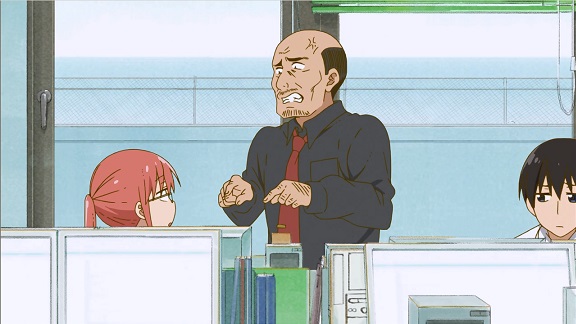
The mangaka behind the original manga apparantly drew inspiration from his own work experience in IT, which tells me some experiences are universal, because everything I mentioned above I’ve seen with female co-workers of mine. AsI said, I’ve worked with a fair few of slightly older, much more experienced and knowledgable, tough as nails women like Kobayashi-san. Not always appreciated them, but still.